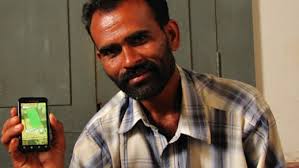Mapping India's future telecom landscape


India still has an eighty percent penetration rate of 'dumb' feature phones, mostly in rural areas. But with smartphone growth rates at a staggering 200 percent, India is quickly skipping the computer era and ramping onto the mobile one where the smartphone will soon be the cornerstone of everyday activity.
Here are some recent eye-opening stats from an Ericsson study that shows how the smartphone and social networking is going to change the Indian telecom landscape in the future
- Mobile subscriber base expected to mushroom from 795 million last year to 1,145 million by 2020.
- Much of this will be smartphone-driven (already quality ‘budget’ smartphones with sub-Rs 10,000 price points ($166) are being introduced to the Indian public—the most anticipated recent one bing the Moto E which I talked about here. Nokia’s X was one of the first ones to begin exploring this market
- This means, the number of such device would rise from 90 million devices in 2013 to 520 million devices by 2020.
- The current consumption of data at 155MB could also increase to 390MB by 2017 and 620MB by 2020
- There’s not going to be much of a stampeded to 4G though. Ericsson predicts that 400 million connections and phones will still be 3G with a 100 million on 4G.
- Social networking phenomena—especially WhatsApp—will drive a lot of this momentum. Already, people are getting used to sending light video files using the service. What’s more, the rural hinterland in some of the most backward states are apparently showing a remarkable propensity towards the medium.
A recent report by a Citigroup Research team that visited the state of Uttar Pradesh sais that, "The pervasive presence (adoption, usage and familiarity) of WhatsApp—the (free) messaging service—was the highlight of our UP drive. This phenomenon, cutting across socio-economic and age strata, reflected awareness/accessibility/affordability of smartphones—and people’s knowledge of/comfort with data plans."